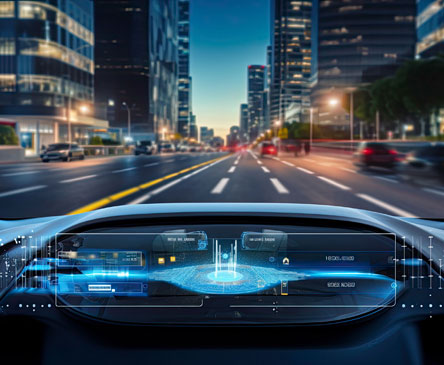South America Heads-Up Display Market: Emerging Trends Fueling Rapid Growth and Safety Innovation

The South America head-up display (HUD) market is on an impressive growth trajectory, valued at USD 205 million in 2023 and projected to climb to USD 351 million by 2030. This expansion is fueled by a robust compound annual growth rate (CAGR) of 9.05%, reflecting notable advances in automotive technology, rising consumer safety awareness, and increasing adoption of advanced driver assistance systems (ADAS) across the region. As vehicles become smarter and drivers more safety-conscious, HUDs are carving a pivotal role in transforming driving experiences throughout South America.
Growing Demand for Safety and Convenience Features
The primary driver behind the rise of the South American HUD market is the escalating demand for enhanced vehicle safety and convenience features. HUD systems project critical driving data such as speed, navigation, and hazard alerts directly onto the windshield, allowing drivers to stay informed without diverting their attention from the road. This capability significantly reduces distraction and improves reaction times — a key factor welcomed by the 72% of consumers who recognize HUDs as vital safety tools. The growing integration of HUDs with ADAS technologies like lane departure warnings, collision alerts, and blind-spot notifications enhances situational awareness, especially in congested urban centers such as São Paulo, Buenos Aires, and Santiago.
Brazil, South America's largest automotive market, leads the charge in HUD adoption. Here, a combination of regulatory mandates, widespread OEM integration, and consumer preference for advanced safety tech is strengthening market momentum. Augmented reality (AR)-enabled HUDs are garnering particular attention by overlaying interactive navigation and hazard information, improving driver intuitiveness and confidence.
Technological Innovations and Connected Car Ecosystem
Beyond safety, the HUD market is evolving through dynamic technological advancements. Today’s systems increasingly connect with smartphone platforms, telematics, and vehicle infotainment, delivering real-time traffic updates, vehicle diagnostics, and seamless ADAS alerts. This integration speaks to the region’s burgeoning interest in smart mobility and connected vehicle ecosystems, where convenience and safety converge.
Market players and automotive suppliers in South America are forging collaborations with international HUD manufacturers to tailor solutions that meet local demand and regulatory standards. These partnerships help drive innovation focused on consumer affordability, adapting sophisticated HUD technologies to both premium models and more affordable mid-range vehicles. Additionally, the aftermarket HUD segment is gaining traction as consumers seek cost-effective retrofit options for older vehicles, expanding the market reach without the necessity of new car purchases.
Regulatory Support Accelerating Adoption
Government regulations play a critical role in fostering HUD adoption. Across South America, regulatory bodies increasingly emphasize vehicle safety by enforcing stricter standards and inspection protocols. In Brazil, Argentina, and Chile, these policies incentivize manufacturers to incorporate HUDs in compliance with global safety norms. Public awareness campaigns further highlight advanced safety technologies, helping consumers appreciate HUD benefits and encouraging broader acceptance.
This regulatory focus ensures that HUD integration becomes not just a competitive advantage but a necessary feature to meet safety compliance requirements. The resulting boost in consumer confidence stimulates demand in urban areas, where high traffic density and accident rates underscore the need for innovative safety solutions.
Market Segmentation and Consumer Insights
The South American HUD market is segmented primarily by application into navigation assistance, ADAS integration, and vehicle information display (including speed, RPM, and warnings). Among these, ADAS-integrated HUDs are emerging as the fastest-growing segment, accounting for approximately 40% of the regional market. These systems transcend traditional displays by providing predictive analytics and augmented reality overlays that allow drivers to anticipate and react to potential hazards proactively.
Consumer behavior across South America reveals multiple influencing factors. Safety awareness and technological appeal rank highest, while cost sensitivity remains a significant adoption barrier—with 58% of consumers hesitant about premium pricing. Brand perception also shapes buying decisions, with a majority favoring vehicles from established manufacturers for their trusted quality and integrated HUD systems. Urban consumers generally show higher awareness and adoption rates compared to rural areas, suggesting an opportunity for targeted education and outreach initiatives.
Market Outlook and Strategic Implications
With an estimated market volume of 1.88 million HUD units sold in 2022, expected to reach 3.52 million by 2030 at a CAGR of 8.1%, the South American HUD market offers lucrative growth opportunities for OEMs, aftermarket suppliers, and technology firms. As electric and autonomous vehicles gain traction, HUD technology will become even more integral to delivering enhanced driver interfaces and safer mobility solutions.
Stakeholders in the automotive ecosystem should prioritize innovation in affordability and customization, addressing diverse consumer needs across countries such as Brazil, Argentina, Chile, Colombia, and Peru. Increasing collaborations between local and international suppliers can accelerate technology diffusion and regulatory compliance, driving sustainable market expansion.
In conclusion, the South America head-up display market is positioned for substantial growth, driven by heightened safety demand, advancing automotive technologies, regulatory encouragement, and evolving consumer preferences. As the region embraces smart, connected vehicles, HUDs will continue to transform driving experiences and contribute to safer roads.